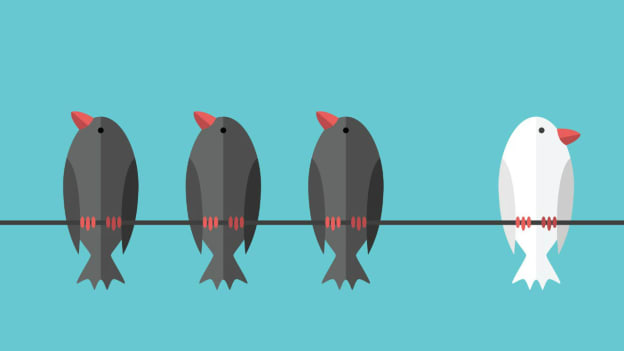How to tackle unconscious bias at the workplace

An organization’s workforce today comes from diverse backgrounds - whether it is in terms of different geographies, ethnicity, religion, culture, gender, sexual orientation or even perspectives. A progressive workplace should provide an inclusive environment where this diversity is respected and celebrated.
In simple terms, unconscious bias refers to the feelings we have towards others that influence our judgement of people and groups — feelings we aren’t aware that we have. Unconscious bias can create conflict, separate people from each other, and hold back talent, therefore negatively affecting business outcomes.
There are multiple facets to unconscious bias. An easy example would be how one may make hurtful comments based on the education, upbringing, beliefs or sexual orientation of fellow employees or team members without necessarily intending or realizing it. In the workplace, thiscould also creep in during the hiring process or during performance reviews. As a matter of fact, the 2018 Recruiter Nation Study showed that when deciding on a candidate, female recruiters are more likely to focus on conversation skills while male recruiters are more likely to focus on personal style and sense of humor.
Forms of unconscious bias at the workplace
- Stereotyping: This is probably one of the most prevalent forms of unconscious bias at workplace. Stereotyping refers to evaluating someone differently based on expectations about the groups that person belongs to. Have you ever presumed a fellow colleague to speak or behave in a certain way based on their nativity? Has your team ever thought that a certain colleague belonged to a particular state or region in the country owing to their physical traits? If yes, then this is just one of the many forms of stereotyping that you may have taken part in - without realising it, of course.
- Halo and Horn: This is a phenomenon wherein, a positive first impression may cause us to ignore negative characteristics or performance traits (halo), or a negative first impression causes us to overlook an otherwise favorable performance. For instance, you may have heard of instances wherein a team lead is hesitant to assign work to a specific team member, because they may not have delivered as expected on a previously assigned task.
- Confirmation bias: This is when a person unconsciously uses an internal filter to support already held opinions and ignores evidence that disproves these opinions. For example, a person believes that ambi-dexterous people are more creative than others. Whenever this person -comes across someone who is ambi-dexterous, they givemore importance to this "evidence" that supports what they already believe. Often individuals may even seek "proof" that further backs up their beliefs while discounting examples that don't support the notion.
The Opportunity Cost of Unconscious Bias
A key repercussion of unconscious bias is that talented individuals may be overlooked or not recognized due to a manager’s bias, negatively affecting their morale, engagement, and innovation. This may also in turn affect team collaboration as employees, when continuously ignored or marginalized, stop participating and engaging with the organisation. Research also indicates that exclusion comes at great cost to organizations in the form of compromised job satisfaction, lower sense of well-being, reduced work effort, diminished employee voice, and greater intention to leave.
Eradicating Unconscious Bias at the Workplace
Several progressive organisations are actively taking measures to address and mitigate unconscious bias within the organisation. On such step is hosting ‘Hiring training’s for managers. In this session, managers are educated and made conscious of different kinds of biases that could impact their recruitment decisions and how to avoid these. The leaders are sensitized through case scenarios to show if their decision or conversation may reflect subconscious bias. Another conscious organization’ effort should be made for performance reviews. It is essential to ensure necessary checks and balances in place, so that appraisal decisions are driven by performance and not the employees’ identity whether its gender, culture, sexual orientation or any other.
Industry reports indicate that managers often tend to give women feedback based on judgements rather than facts. Teaching managers to use specific facts and behaviors when giving constructive feedback to employees can help reduce the bias at the workplace. In terms of gender bias, specifically, organisations and HR partners need to guide managers to avoid attributing women’s contributions to external factors or luck. This is where becoming mindful of language becomes utmost important!Involving more people in the review process with 360-degree reviews, offers a holistic picture of an employee’s performance and helps to identify and prevent possible biases.
Creating Employee Resource Groups
Employee Resource Groups (ERGs) also have a key role to play in mitigating unconscious bias. In addition to offering a platform wherein employees can discuss such issues they encounter, ERGs also bring in speakers and host events to discuss the subject in a broad forum. Having ERGs also highlight organization’s commitment to this cause.
Building a diverse talent pipeline, encouraging a culture of respect and belonging, and increasing inclusion of under-represented groups, makes every organization stronger. By encouraging others to bring their whole selves to work, we elevate our talent and improve business outcomes. For instance, we drive the ‘Multi Voice’ initiative to build a diverse, inclusive workforce that embraces different perspectives and experiences. It helps us foster innovation, challenge the status quo, and drive business performance. Employees learn from each other and come up with newer ways of doing things. It is a foundational philosophy that has helped us drive innovation and be recognized as one the best places to work.















